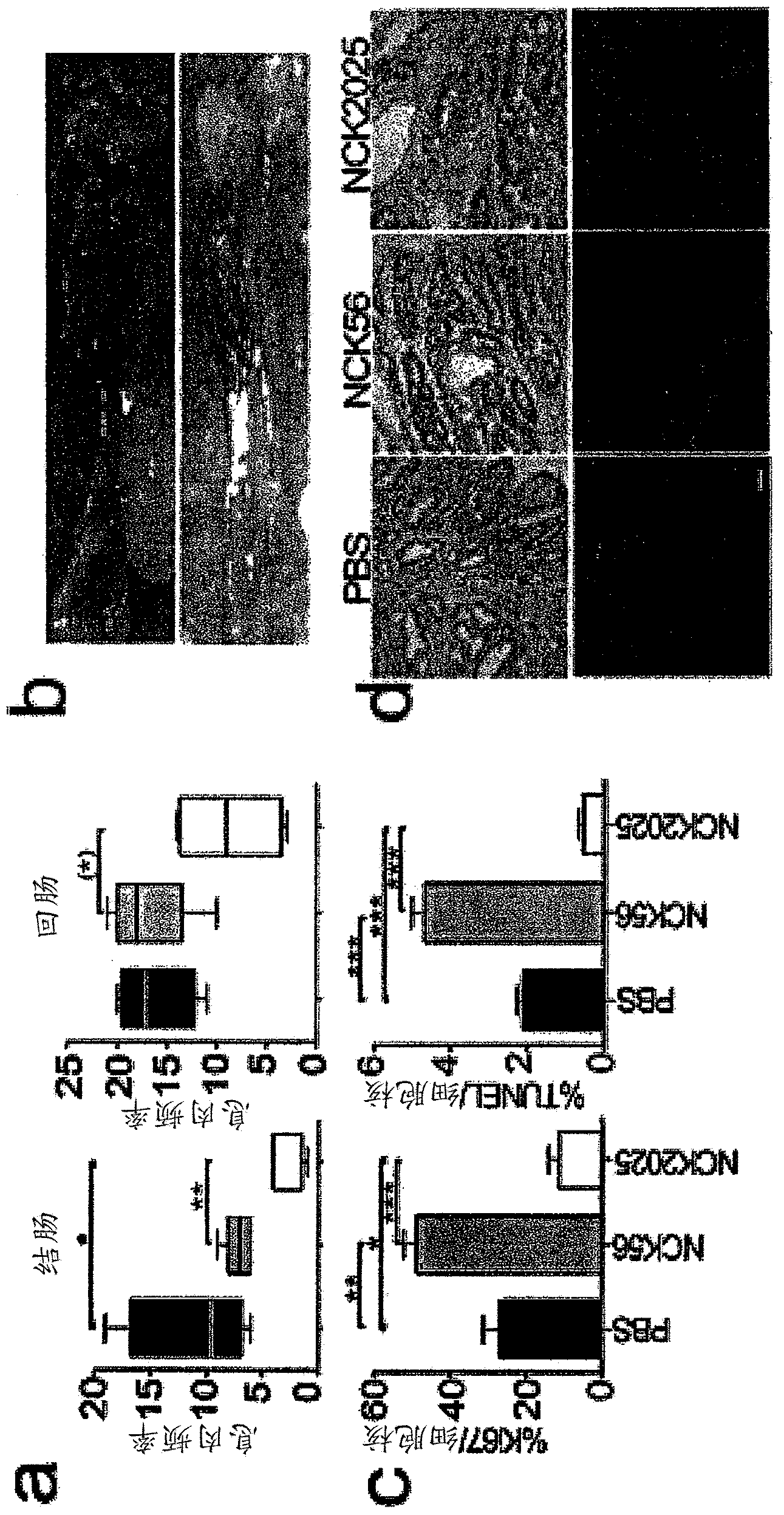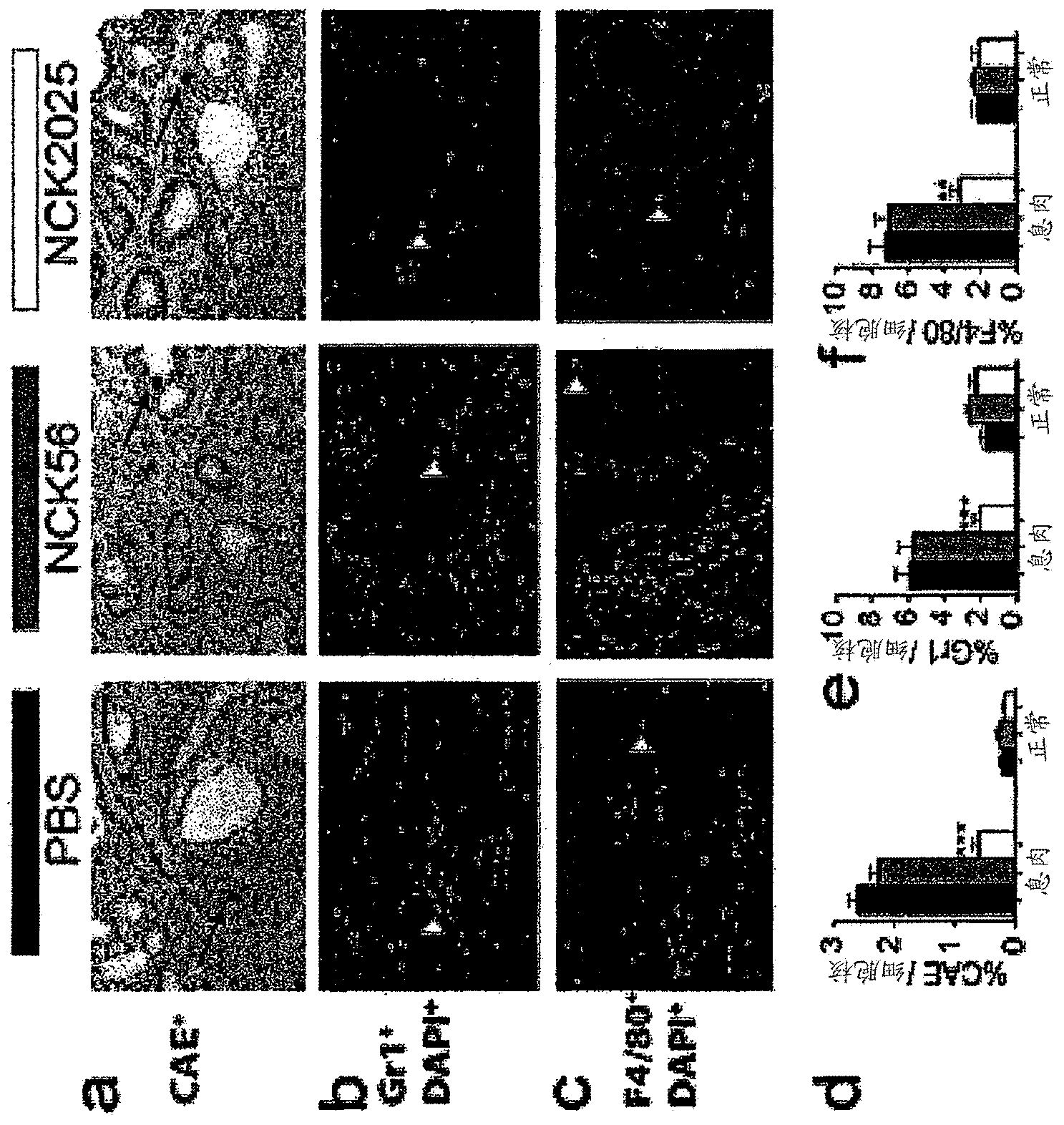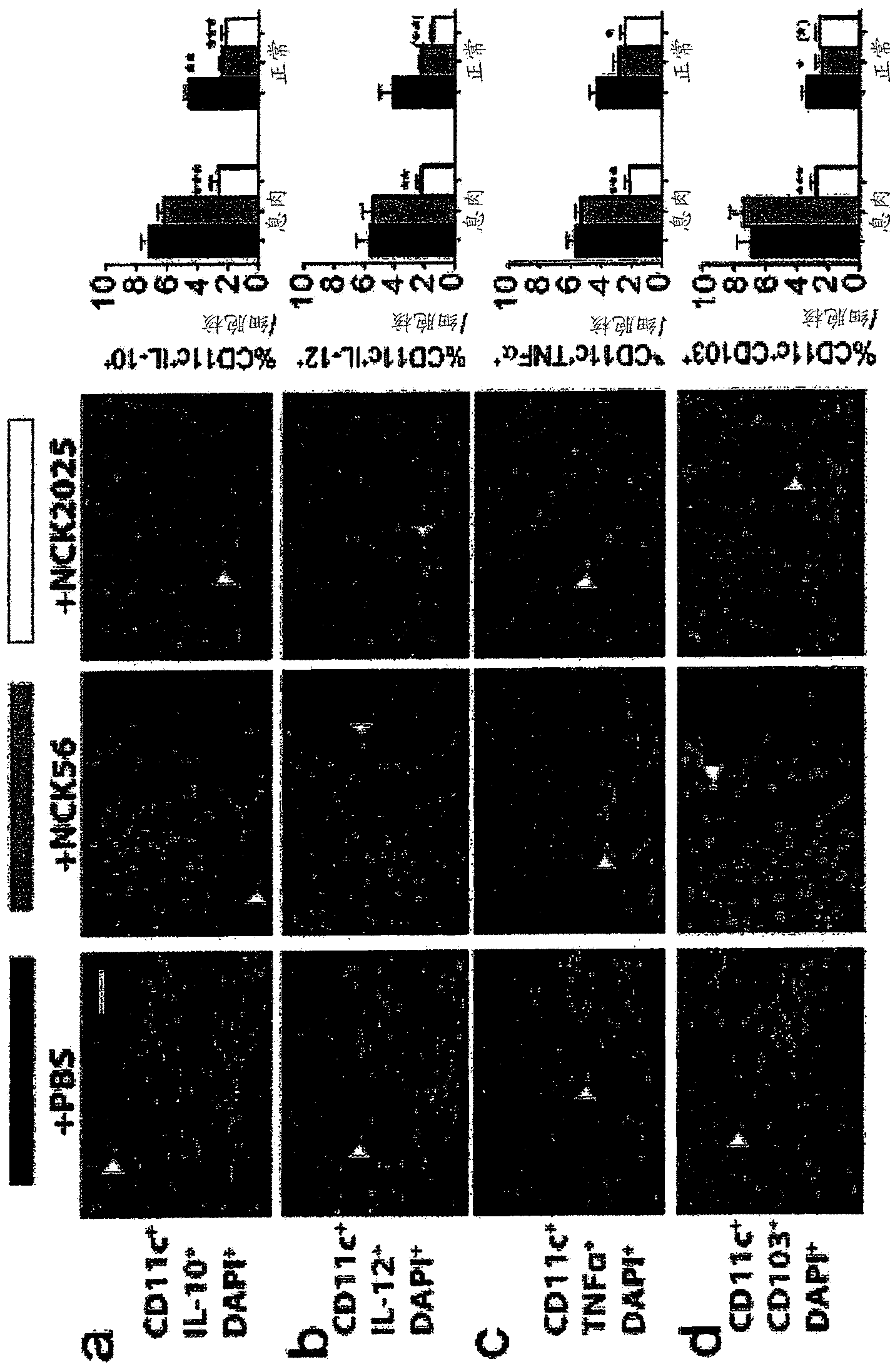Methods to reduce polyposis and colorectal cancer
A technology for colorectal cancer and polyposis, applied in the field of reducing or inhibiting polyposis and colorectal cancer, can solve the unclarified interaction between polyposis and related colorectal cancer
- Summary
- Abstract
- Description
- Claims
- Application Information
AI Technical Summary
Problems solved by technology
Method used
Image
Examples
example 1
[0095] A mouse model of polyposis coli was used to investigate the role of gut microbiota in controlling gastrointestinal immune balance. To analyze the immunomodulatory properties of NCK2025, 5 × 10 8 5-month-old polyp-laden mice were treated orally with a dose of cfu NCK2025, or fed water for 4 weeks as a control. To specifically address the role of LTA, a third group of mice was treated in a similar manner with the parental Lactobacillus acidophilus NCK56. After 4 weeks of treatment, all mice were euthanized and analyzed. NCK56-treated mice showed little change in polyposis compared to control PBS-treated mice. In contrast, the number of polyps in the small intestine of NCK2025-treated mice was reduced ( figure 1 A) and the number of colonic polyps was significantly reduced ( figure 1 A, B). Mitotic and apoptotic activity was significantly reduced in polyps of NCK2025-treated mice compared to PBS- and NCK56-treated mice ( figure 1 C, D). These observations demonstrat...
example 2
[0097] Immunofluorescent staining of paraffin sections of whole colons was performed to provide evidence of suppressed inflammation in NCK2025-treated mice. Previously, the expansion and activation of mast cells in adenomatous polyps was reported, along with evidence for their tumor-promoting role (Khazaie et al. (2011) Cancer Metastasis Rev 30:45 (Khazaie et al., 2011, "(Cancer and Metastasis Review”, Vol. 30, p. 45)). To assess the influence of the gut microbiota on inflammation, intrapolyposis mast cell density was quantified in mice with polyposis treated with NCK2025, compared with fed parental eosinophilic Lactobacillus NCK56 compared to mice fed with NCK2025. A significant reduction in mast cell counts within polyps was observed in mice fed NCK2025, reaching levels equivalent to mast cells in the colon of polyposis-free mice, but found to be less than PBS-treated There was little change in mice compared to NCK56-treated mice ( figure 2 A, D). Polyps are infiltrated w...
example 3
[0100] Previously, we reported that polyposis-associated inflammation became systemic in a mouse model of hereditary polyposis that developed splenomegaly and elevated levels of serum pro-inflammatory cytokines (Gounaris et al .(2008) PLoS One 3: e2916 (Gounaris et al., 2008, PLoS One, Vol. 3, p. e2916)). Aged polyp-laden mice also developed splenomegaly ( Figure 5 A). Treatment with NCK2025 resulted in a significant reduction in spleen size, while treatment with NCK56 showed a similar trend, however it was not statistically significant ( Figure 5 A). Reduced spleen size was associated with increased relative frequency of CD4 effector T-cells and decreased Tregs in the spleen ( Figure 5 B), macrophages and granulocytes decreased ( Figure 5 C) Associated. Similar but not significant trends were also seen in MLN ( Figure 5 B, C). These changes corresponded to a significant decrease in serum levels of IL-10 and pro-inflammatory cytokines but an increase in IL-22 ( I...
PUM
 Login to View More
Login to View More Abstract
Description
Claims
Application Information
 Login to View More
Login to View More - R&D
- Intellectual Property
- Life Sciences
- Materials
- Tech Scout
- Unparalleled Data Quality
- Higher Quality Content
- 60% Fewer Hallucinations
Browse by: Latest US Patents, China's latest patents, Technical Efficacy Thesaurus, Application Domain, Technology Topic, Popular Technical Reports.
© 2025 PatSnap. All rights reserved.Legal|Privacy policy|Modern Slavery Act Transparency Statement|Sitemap|About US| Contact US: help@patsnap.com



